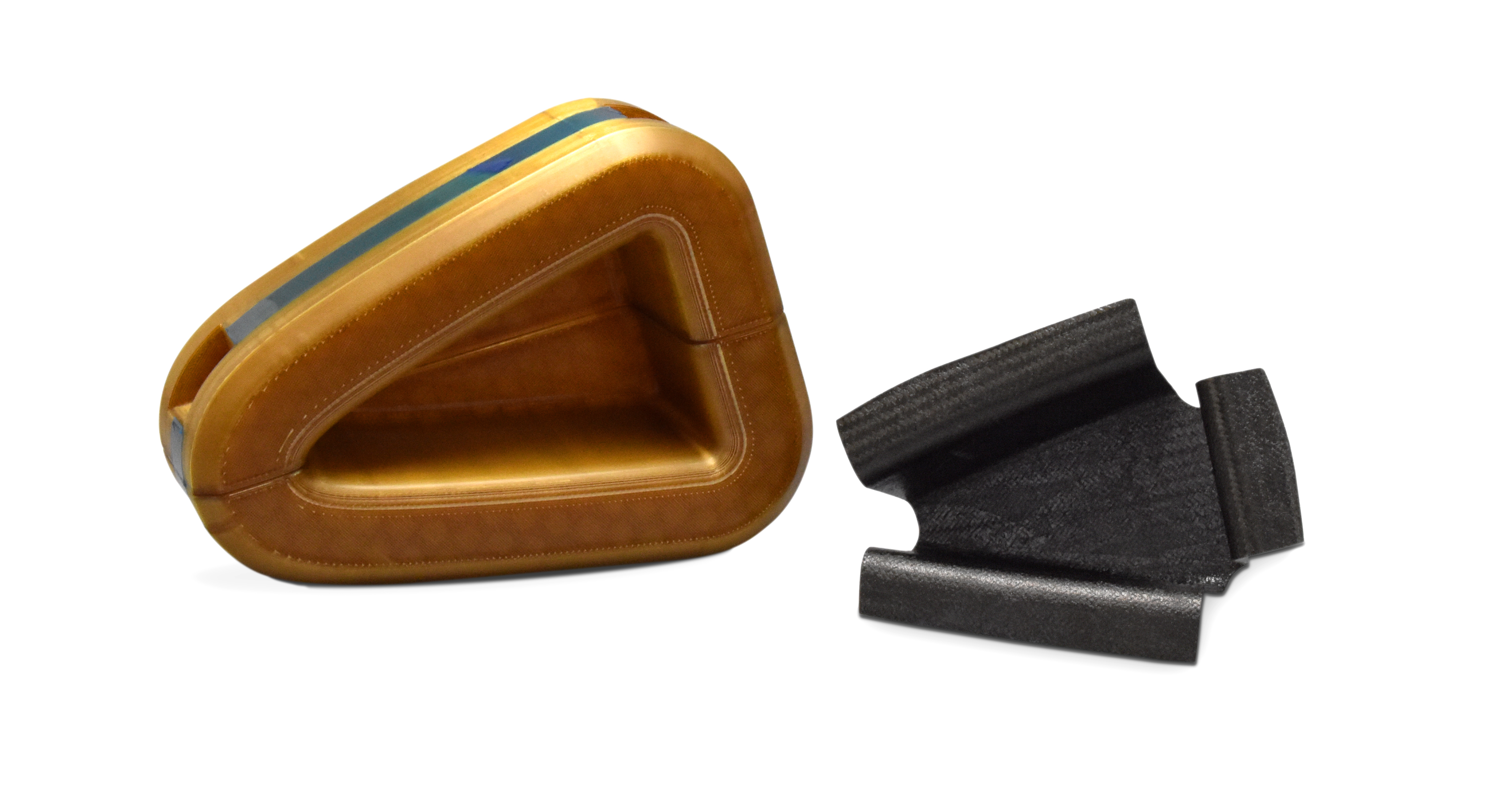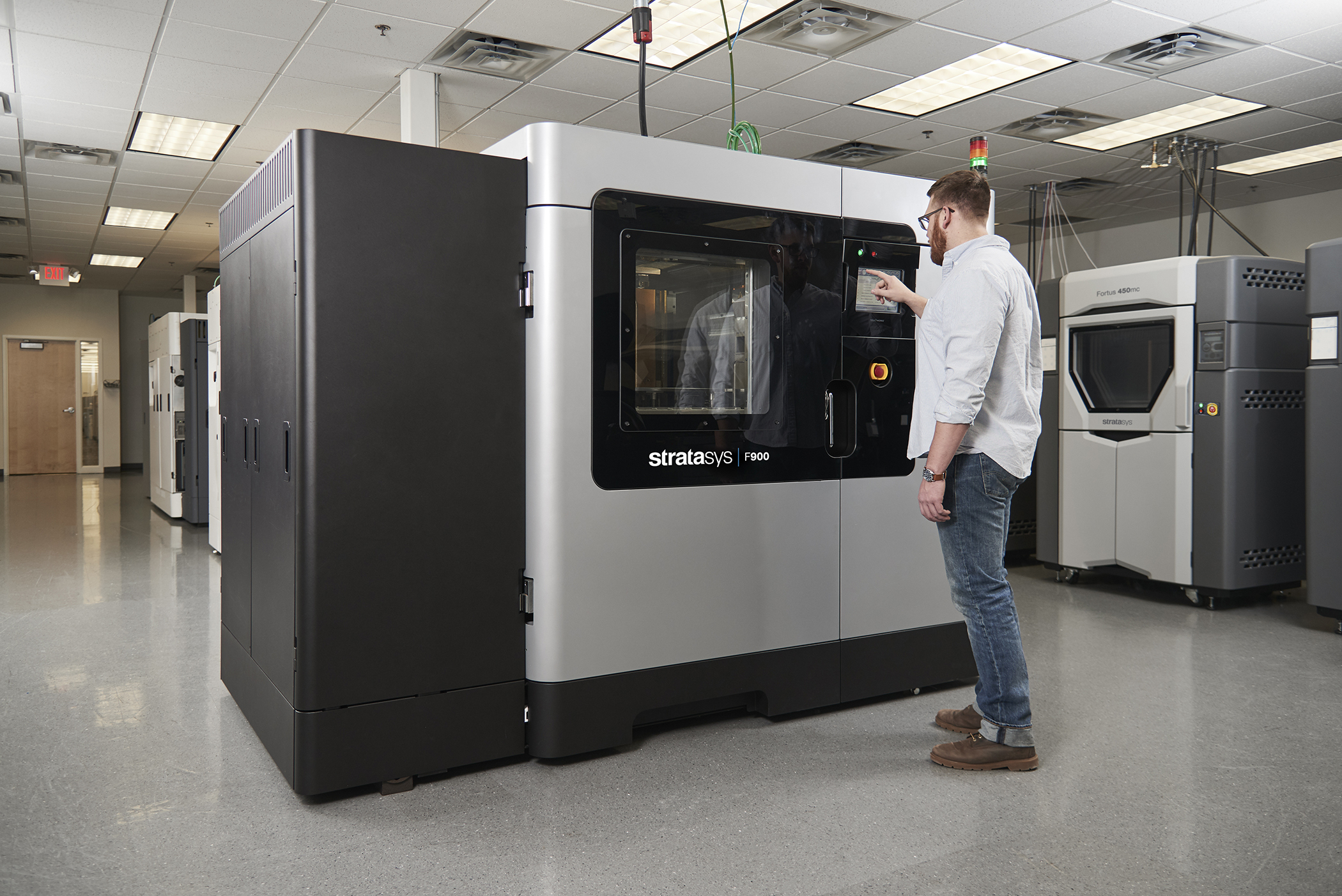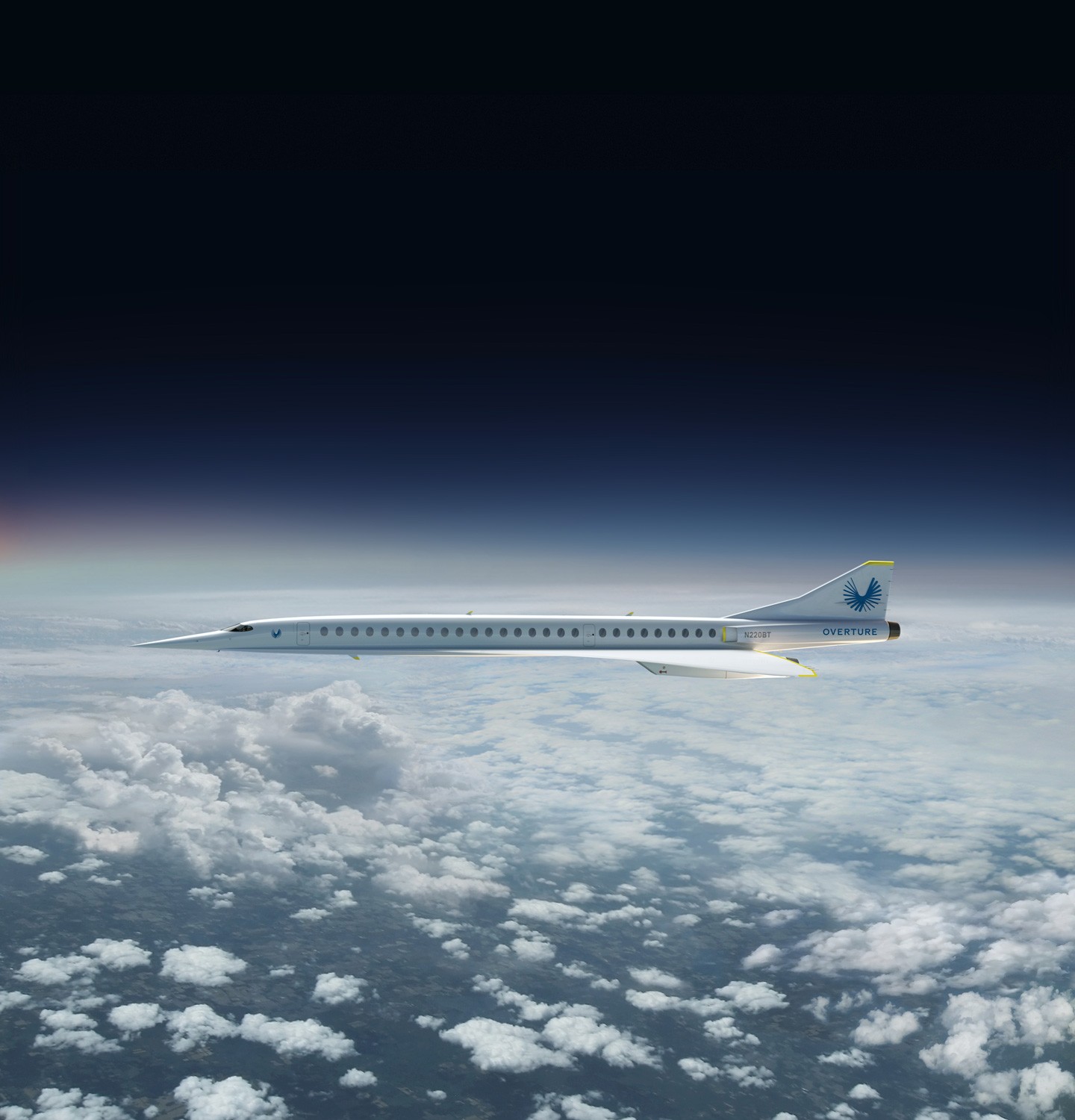In time for the Paris Air Show 2019, leading 3D printer OEM Stratasys has announced an update to its partnership with Boom Supersonic, a Colorado-based aerospace company, by signing a seven-year partnership extension. Under the agreement, both companies aim to further accelerate the adoption of additive manufacturing for flight hardware by utilizing Stratasys’ Aircraft Interiors Solution (AIS) package alongside the F900 3D printer.
Their initial partnership began in 2017, when both companies agreed to leverage Stratasys’ F370 and Fortus 450mc 3D printers to support the development of Boom Supersonic’s demonstrator XB-1 aircraft. Now, under the extended long-term agreement, Boom Supersonic will continue to use Stratasys 3D printing to develop the XB-1 prototype as well as future commercial aircraft by using the AIS package.
“By being able to print critical parts and components on site rather than purchasing them from a supplier, we can create custom parts, increase our speed from engineering to manufacturing, and focus on building the aircraft and fulfilling our vision,” explained Mike Jagemann, Head of XB-1 Production at Boom.
“Stratasys’ standing as a global leader in 3D printed aerospace applications made them an ideal partner for Boom, and we’re excited to extend this partnership long-term.”

3D printing speeds towards commercial supersonic travel
Founded in 2014, Boom Supersonic aims to create the fastest commercial airliner using supersonic travel, and “make the world dramatically more accessible.” Its XB-1 aircraft is a demonstrator for developing mainstream supersonic travel, acting as a subscale prototype for Overture, the company’s Mach-2.2 commercial airliner. Boom Supersonic opted to use the Stratasys F370 and Fortus 450mc 3D printers in 2017 to help accelerate the development of the XB-1 through tooling, prototypes and test benches, 3D printing over 200 parts in the process.
The new agreement between the companies moves beyond rapid prototyping however, with Boom Supersonic aiming to integrate Stratasys’ FDM 3D printing technology into flight part production for the XB-1 and eventually the Overture. Using the Stratasys F900 3D printer with the AIS package, the company is reported to have already produced hundreds of 3D printed parts for the demonstrator aircraft.
Jagemann added, “During the first three years of our partnership, we 3D printed more than 200 parts for tooling, prototypes and test benches using Stratasys’ F370 and Fortus 450mc 3D printers, and have saved hundreds of hours of work time, enabling rapid iteration of design cycles.”

Streamlining the qualification process for 3D printing in aerospace
Stratasys’ AIS package, announced in 2017 alongside the news of its partnership with Boom Supersonic, aims to improve the mechanical properties of 3D printed aircraft production through repeatable development. The package is designed to help qualify 3D printed aircraft parts, aiding the process of certification by the Federal Aviation Administration (FAA) and the European Aviation Safety Agency (EASA). It consists of the ULTEM 9085 resin and the F900, as well as documentation and training to help guide the qualification process and create flight-ready parts.
Boom Supersonic hope to utilize the AIS package to speed up and streamline the qualification of its additively manufactured parts for aircraft installation. Stratasys claim the package will be instrumental in the production of the XB-1 and Overture, which is expected to fly more than two times the speed of sound, or in excess of 1,500 miles per hour (2,400 km/h). The XB-1 is expected to be rolled out later in 2019 and flown at supersonic speed in 2020. The Overture is currently in the development stage, and consumer travel is expected to begin in the mid-2020s.
“The team at Boom is doing something that’s never been achieved – successful mainstream supersonic airline travel. But development of aircraft that can safely and efficiently travel at Mach 2.2 requires a new approach to manufacturing processes,” added Rich Garrity, President Americas, Stratasys.
“Working together, our teams have put the technology to work for efficient, reliable and repeatable prototypes, tooling and jigs and fixtures. Now, we’re ready to go further – for strong, durable, lightweight production-grade aircraft parts.”
Both Stratasys and Boom Supersonic will be present at the International Paris Air Show this week. Stratasys will be showcasing its solutions for the aerospace industry at Hall 4, Stand D192, whereas Boom Supersonic is located at Chalet Row C, #24.

Stratasys in aerospace and automotive
With its extended agreement to help establish commercial supersonic travel, the 3D printing solutions offered by Stratasys have continuously been employed for prototyping, tooling and production in various high-performance industries.
In aerospace, the company’s Fortus 450mc 3D printer has also been used by Marshall Aerospace and Defence Group (ADG), a UK-based aircraft design and maintenance company. Marshall ASG utilized the 3D printer to build tooling, functional and prototyping parts for aircraft. The F900 on the other hand has helped Spanish aerospace composite specialist IDEC to 3D print specialized aerospace tooling for using Resin Transfer Molding (RTM) technology in aerospace parts.
Over in automotive, the company has a multitude of partnerships with racing teams to produce 3D printed high-performance parts and tooling. Most recently, the company announced a partnership with Don Schumacher Racing (DSR) to accelerate prototyping and new component design of its vehicles.
Subscribe to the 3D Printing Industry newsletter for the latest news in additive manufacturing. You can also keep connected by following us on Twitter and liking us on Facebook.
Looking for a career in additive manufacturing? Visit 3D Printing Jobs for a selection of roles in the industry.


